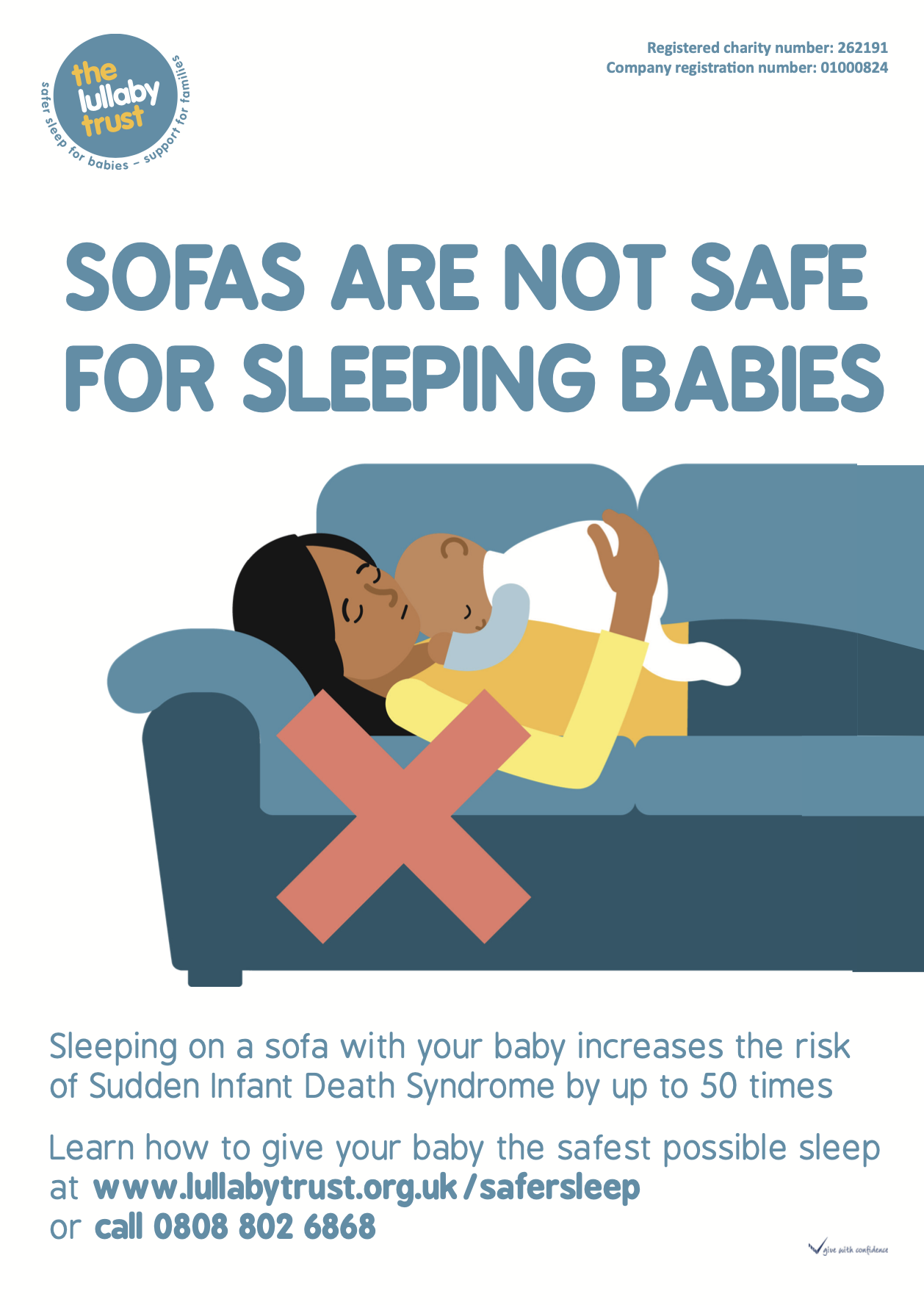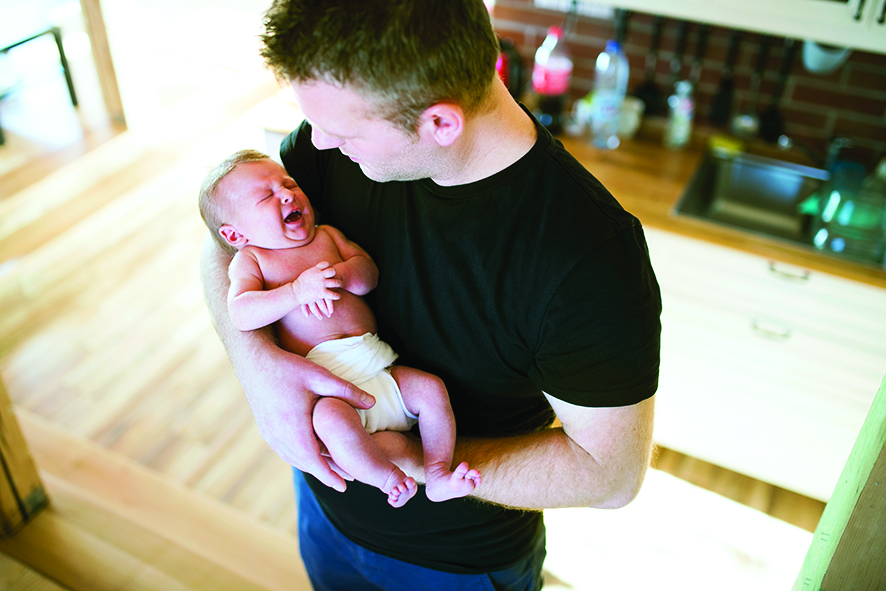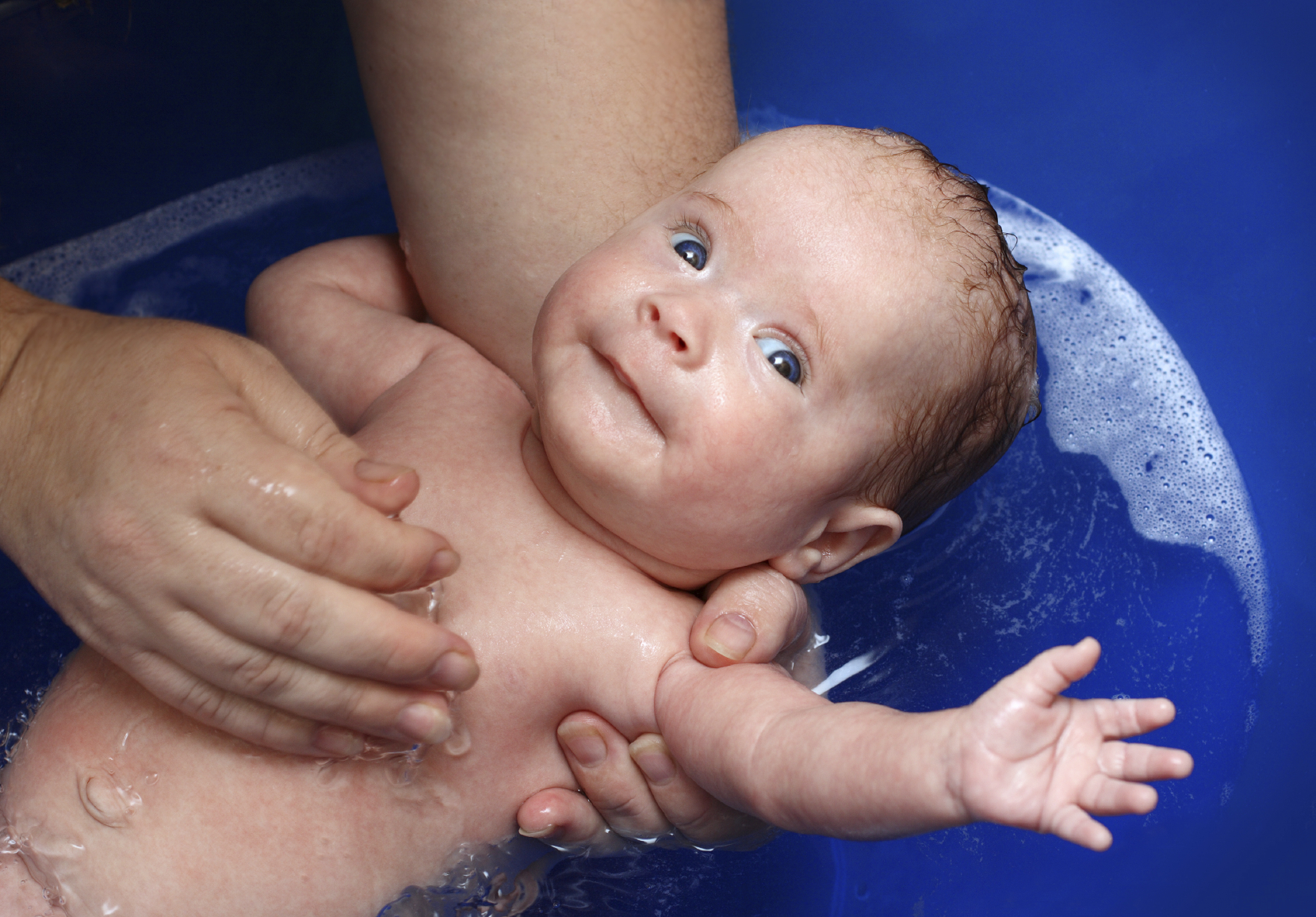
Ask DadPad, Parenting Advice, Safety, Sleep
Ask DadPad: How do I keep my baby safe from harm?
Posted on 8th June 2023
This week is Child Safety Week – this year with the theme of Safety Made Simple – so we thought this was a great opportunity to add to our existing library of safety-focused blogs with a new post providing a detailed overview of the key ways in which you can keep your baby and child safe from harm.
The great news is that there are some really helpful and straightforward sources of information on safety easily available online, including in particular:
- The Child Accident Prevention Trust (CAPT) website;
- The Royal Society for the Prevention of Accidents (RoSPA) website; and, of course
- The DadPad app!
A lot of the info that we’re pulling together in this post has come from the fantastic new resource from CAPT – their ‘Safety Made Simple – Parents’ Pack‘ – which you can download from their website (or just click on the link here).
We’re going to look at key baby and child safety messages which will help you learn more about keeping your baby:
- Safe whilst sleeping
- Safe when crying
- Safe in the sun
- Safe around water
- Safe from burns
- Safe to breathe
- Safe from poisons

Safe whilst sleeping
Especially when they are small, one of the biggest risks of potential harm to baby is when they are asleep. Despite the fact that much more is now known about what to do and what not to do in order to give baby the safest sleep experience, research from The Lullaby Trust has found that “less than a third of dads have been given advice on how to reduce the risk of sudden infant death syndrome (SIDS – previously known as ‘cot death’)… with 74% stating they are worried or very worried” about this aspect of baby care.
For these reasons, we’re always keen to share as much info as possible with expectant and new dads on how to keep their baby safe when they sleep. Core messaging, such as: always placing your baby to sleep on their backs; putting baby to sleep in a clear cot or sleep space, ideally on their own; and never falling asleep on a sofa or armchair whilst holding your baby is set out both in the DadPad and the DadPad app and also in the following sleep-focused blogs from our website:
- How do I keep my baby safe while they sleep?
- How do we safely co-sleep with our baby? and
- Every sleep counts.
You can also find out more on the ‘science’ behind newborn babies won’t – and shouldn’t be expected to – sleep through the night, from another of our blog posts, which also includes our ten key tips on safe sleep, summarised below:
- Baby should always be put BACK to sleep
- Baby should have their own, flat sleeping surface
- Baby should always be positioned FEET-TO-FOOT in their cot
- Baby’s cot should be kept CLEAR
- Baby should not be left to sleep in a car seat for extended periods of time
- NEVER sleep on a sofa or armchair whilst holding your baby
- Stop smoking
- Support mum to breastfeed your baby
- Keep baby’s room at a safe temperature
- Co-sleep safely
For lots more safer sleep messaging, advice and information, do visit The Lullaby Trust website, which has both a dedicated ‘Dads Zone‘ and a specific advice page for young parents, Little Lullaby.

Safe when crying
Coping with crying is one of the biggest challenges to any new parent. Surprising as it might sound, crying can also put baby at serious risk of harm. The ICON Cope website explains:
Parents and people looking after babies can sometimes get so angry and frustrated with a baby’s cry, they lose control and shake their baby – which is highly dangerous, leading to lifelong injuries and, potentially, death.
With some 200 children killed or hurt as a result of abusive head trauma each year in the UK (24 out of every 100,000 hospital admissions for babies are due to abusive head trauma) and studies indicating that a key trigger for baby being shaken – which can lead to such injuries – is their caregiver’s inability to stop them from crying, it’s crucial to be aware of the best things to do if you ever find yourself becoming stressed, angry or exasperated with your baby’s crying.
The ICON Cope message is a simple but important one. We look at it in more depth in our separate How do I cope with my baby’s crying? blog post, but the key points are as follows:
- Infant crying is normal and it will stop!
- Comfort methods – such as fulfilling an unmet need in baby (are they hungry? do they need a sleep? does their nappy need changing?) and/or offering some simple calming techniques, including singing to them or taking them for a walk in their pram – can sometimes soothe baby and bring an end to their crying;
- It’s OK to walk away if you’ve checked that baby is safe and the crying is getting to you. After a few minutes, when you’re feeling calmer, go back in and check on your baby; and
- NEVER , EVER shake or hurt a baby.
You can also find more information on coping with crying via the Parents page within the ICON Cope website, and the NHS ‘Soothing a crying baby’ webpage also contains good advice.

Safe in the sun
On hot sunny days – which we’re happily experiencing right now as we write this! ☀️ – coping with a baby and keeping them safe can become even more challenging.
Once again, we’ve written a more detailed blog post on this very subject, so do go and have a read of that for more information: How do I keep my baby safe in the sun?
The key things, as a parent, to be aware of during a hot spell in order to keep your baby safe are as follows:
- Skin safety – babies under 6 months of age should ALWAYS be kept out of the sun, and minimising the time spent in the direct sun when they’re older than this. Loose, light clothing that covers their arms and legs and keeping baby in the shade should always be your first line of defence, but other essentials are a hat (with a brim/flap to cover their neck), baby-safe sunglasses, and suitable suncream, with a minimum SPF of 50; and
- Dehydration – babies and children are at greater risk of dehydration than adults, so this is another thing to be alert for on hot days. If baby is still being exclusively breastfed (i.e. they’re not eating solid foods), then you don’t need to overly worry about this, other than to perhaps offer baby additional feeds to keep their fluids up. For bottle-fed babies, you might want to offer some cooled water that has been boiled (your Health Visitor will be able to advise further on this). Babies who are eating solid food should also be offered sips of water with their meals and during the day – although their milk should still be their main source of drinks throughout their first year.
Sleeping when it’s hot – as we all know – can be a real challenge, and this is also true for babies. Further, especially for younger babies, overheating when sleeping is a danger and so it’s important to refresh your knowledge of sleep safety at this time. Check out The Lullaby Trust’s ‘Baby Summer Safety’ webpage for useful info on this and other holiday-related topics, and the British Skin Foundation’s ‘Sun Safety Advice for parents’ page provides more detailed advice on keeping baby’s skin safe from harm in the sun.

Safe around water
Playing and splashing in water is something that most babies and children enjoy. When you consider that it’s possible for a baby to drown in just 5cm of water, you can see why it’s so important to keep a close eye on them at all times when they’re in or near water.
During bath time, then, babies and children should be supervised at all times; don’t, for example, rely on a bath seat to keep them safe. Around the house, check for other potential sources of standing water – such as a pet’s water bowl.
Outdoors, make sure that there are no ponds, hot tubs or pools that your child can get access to (e.g. in a neighbour’s garden – is there any way your child might be able to ‘escape’ from your garden to theirs?), especially when visiting other people’s homes or a public park. In the summer, if you’ve got a paddling pool or even a bowl of water outside for little ones to play in, again make sure that they are being watched and supervised by an adult at all times, and always empty these items and store them safely when they’re not being used.

Safe from burns
As burns and scalds have the potential to cause serious, painful and sometimes life-threatening injuries to naturally-inquisitive babies and young children, it’s important as a parent to take precautions.
Some of the key burn and scald risk items are:
- Hot drinks – keep these out of reach from babies and little ones as much as possible, and always put down a hot drink before picking up your child. CAPT advise that hot drinks remain hot enough to scald even 15 minutes after having been made, and they also highlight that children aged between 8-18 months are the most vulnerable to danger here, due to their love of grabbing out for items;
- Home heating – radiators, fireplaces and hot water pipes are all dangerous to babies and small children, so you should ensure that they are properly protected (e.g. by the use of fireguards) and that cots etc aren’t placed up against or close to radiators;
- Cooking and kettles – clearly, there are lots of heat-related dangers in the kitchen, especially when meals and hot drinks are being prepared. For this reason, ideally keep little ones out of the kitchen when this is happening, or place them somewhere safe and secure, such as strapped safely in a highchair which is well out-of-reach of anything hazardous. Also aim to keep your kettle towards the back of the worktop, and use the back rings of your hob when cooking, with pan handles pushed back and out of reach – just in case;
- Baths and washing – as well as the risk of drowning, as considered above, bath- and wash-time also raise the risk of scalding, if the water is too hot. The advice is to always put cold water in the bath first, and then to top it up with hot, rather than the other way around, and to test the water’s temperature with your elbow before putting your child in or using it to wash them. Finally, if they’re in the family bath, make sure they keep away from the hot tap and aren’t able to touch or fiddle with it;
- Hair equipment – hot hair straighteners and curling wands can cause serious injury, so make sure that any in your house are always turned off when not in use, and left somewhere safe and out of reach to cool down. CAPT advise that they can still cause burns up to 15 minutes after being switched off; and
- Batteries and magnets – swallowing small batteries (e.g. the flat, button batteries) or magnets can cause severe internal burn damage to your baby or child. For this reason, you should be vigilant about keeping any in your house out of reach at all times, and also to ensure that any products containing them (including in particular baby’s toys) are safe and secure. You can find further safety information on button batteries and magnets via the CAPT website.

Safe to breathe
Another thing to be really on the look out for in order to keep your baby or toddler safe is any item which could cause them to choke, suffocate or be strangled.
Choking can happen as a result of attempting to swallow so many things – even their milk – so it’s crucial to be vigilant, especially at feeding time. Take care, when weaning baby onto solid food, not to offer small, round food items (such as sweets/lollipops, popcorn, grapes, cherries, cherry tomatoes, hot dog sausages, meatballs, chunks of cheese and round-shaped pieces of banana), all of which are just the right shape to get lodged in their windpipe. The best solution here is to cut the food items in half lengthways or into quarters – don’t simply cut them across, as this won’t resolve the danger. Cut hard food items (carrots, apples, celery, etc) into thin strips, and always supervise baby when they are feeding – never, for example, be tempted to prop baby’s bottle up somewhere and leave them to feed by themselves. There’s also, of course, a whole load of non-food items which also have the potential to cause a choking danger to babies, with CAPT reminding us that anything smaller than a 2p piece can choke a young child – their ‘Safe from choking’ webpage provides a great overview and is well worth a detailed read.
The danger of suffocation can arise from anything that could block baby’s airway. One of the most obvious risks, and most common items to find around a baby, is a nappy sack, so always ensure that these, and any other plastic bags or wrapping, are kept well away from baby. Pieces of burst balloon can also suffocate a small child, so never leave them alone with a balloon. There’s also a suffocation risk when baby is asleep – you can find out more about how to prevent this in the ‘Safe when sleeping’ section above, and the linked blog posts. Finally, it’s also advisable to keep pets – especially cats – out of baby’s bedroom/away from where baby is sleeping.
In terms of strangulation risk, the things to be most mindful of are strings and cords which hang down and which are potentially within reach of a curious baby or toddler. This means keeping hanging mobiles and similar items away from baby’s cot, and also checking that all window blind cords within your house are either removed, if possible, or kept out of baby’s reach. Cleat hooks allow for cords to be wound safely away, but do always consider whether or not baby could climb to access a cord that you might otherwise think is not a danger. There’s more information on blind cord safety via the RoSPA ‘Blind cords’ webpage. Other places where your baby or toddler might stumble across a hazardous cord or strap around the house include: on clothing (garments with cords, ribbons or belts); electric cables (for example, on their baby monitor, which could be within reach of their cot); bag straps, especially drawstring; and dummies which are on ribbons or chains.

Safe from poisons
Lots of everyday items in our house are actually incredibly dangerous, yet still very tempting to children. Examples include those colourful, squashy laundry tablets; shiny packets of tablets and medicines, which again are often in interesting colours and may appear suspiciously sweet-like; and bright-coloured bottles of cleaning fluids, bleach, and so on…
Wherever possible, keep ALL of these items well out of your baby and young child’s reach, possibly even in a locked cupboard, as that is the safest approach. Label everything clearly (e.g. if you’ve decanted laundry products into glass jars, or cleaning products into other bottles etc), just in case – and be especially aware of leaving these in reach of toddlers, who may less easily recognise the liquid content as dangerous if they’re in a more ‘friendly’-looking receptacle.
It’s also worth being aware of other locations where babies and children might randomly stumble upon dangerous items – for example, do you keep a couple of paracetamol in your back pocket or in your wallet, or does your partner have painkillers in her bag or her bedside table? You might have kept the ‘obvious’ sources of danger safe, but it’s easy to forget and overlook the others. After all, anyone who’s seen a toddler left alone with a handbag knows how quickly they can get emptied and explored…
For more information on poisons and poisoning, do visit the RoSPA webpage.
References and further reading:
Child Accident Prevention Trust (CAPT):
- Website
- Safety Made Simple Parents’ Pack
- Resource Centre – with access to all of CAPT’s free educational resources
- Social Media: Twitter, Facebook and Instagram
Royal Society for the Prevention of Accidents (RoSPA):
- Website
- Keeping Kids Safe information hub
- Social Media: Twitter, Facebook and Instagram
The Lullaby Trust (for safer sleep advice):
ICON Cope (for coping with crying advice):
- Website
- Parents page
- Social Media: Twitter, Facebook and Instagram
British Skin Foundation (for sun safety advice):
- Website
- Sun safety advice for parents
- Social Media: Twitter, Facebook and Instagram

